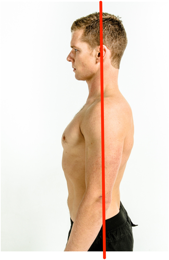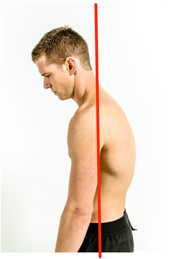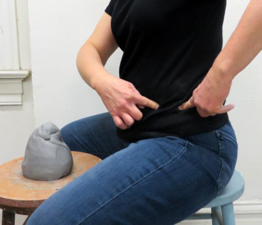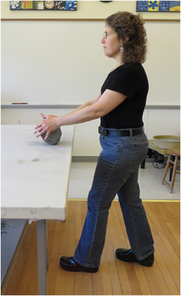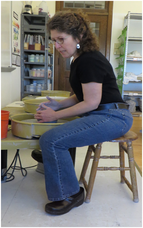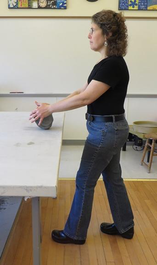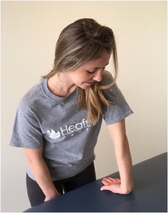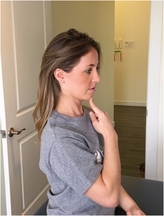Ceramics and Body Mechanics
Tips for the Ceramic Artist
- The best posture is a dynamic one with your core and shoulder muscles engaged. When in doubt, move!
- Avoid staying in one position for more than 20 to 30 minutes.
- Do mini exercises to adjust muscles that are being put into compromising or stressful positions.
- Listen to your body. If aches or pains arise, address the problem.

